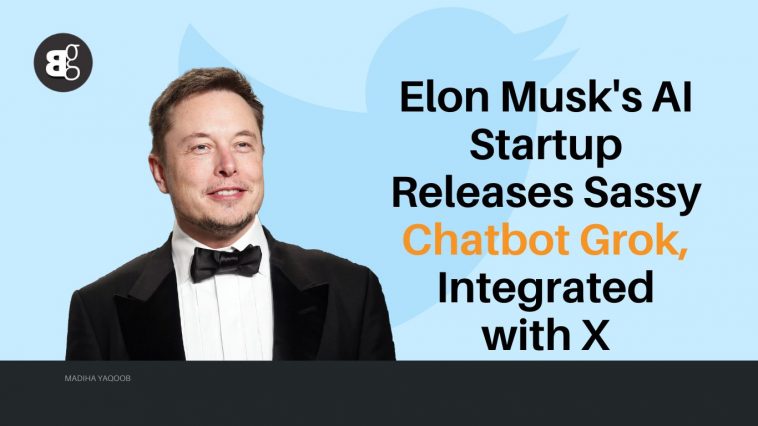The first artificial intelligence model developed by Elon Musk‘s business xAI, Grok, is a humorous chatbot that has real-time access to data from X, the social media network that Musk paid $44 billion to acquire a year ago. Grok wants to differentiate itself in the crowded AI industry by responding to unique queries that the majority of AI systems would ignore and by having humorous and ironic behavior.
The launch of Grok by xAI is a reflection of the increased interest in and funding for generative AI businesses, which are able to produce text, code, and images that resemble humans virtually immediately. Though the commercialization of technology is still in its early phases, some raise fears about the emergence of a tech bubble, while others view this business as revolutionary.
Particularly, the fact that xAI was able to deliver Grok after just two months of training demonstrates how up-and-coming companies are taking on the industry’s top players. Almost a year ago, OpenAI launched ChatGPT, a revolutionary chatbot.
Grok, which will be available to users of the app’s new “Premium+” service and cost about $16 per month after the unclear testing period, is up for testing to X users.
Musk is attempting to boost sales and engagement at X, which has seen a decline in income due to worries about restricting material on the site, with this launch. Musk formed xAI earlier this year, and since then, the group of engineers—who were previously employed by Microsoft and Google DeepMind—has been battling to overtake more seasoned rivals like OpenAI.
Experts have expressed worry about Grok’s possible biases, the distribution of dangerous content, and the spread of incorrect information. Some claim Elon Musk’s strategy of making the chatbot less politically correct is riskier than earlier AI models, which have also drawn criticism.
Benchmark studies indicate that Grok performs comparably to the newest models from Meta and Inflection, even though it was developed in a matter of months. According to xAI, Grok’s reasoning and mathematical query-answering skills are comparable to those of OpenAI’s GPT-3.5 and Anthropic’s Claude model.
While Grok makes great strides toward effectively training big language models, it is not as good as OpenAI’s GPT-4, which has proven to perform at a human level on industry benchmarks and is already being incorporated into partner firms’ applications.
Investors in artificial intelligence have taken notice of the quick development of xAI in training Grok. Although it might not outperform GPT-4, its performance is remarkable given its tiny size and quick development.
However, it’s crucial to remember that developing an AI system for corporate clients differs from developing a chatbot for consumers since enterprise clients place a higher priority on efficiency, safety, and dependability.




